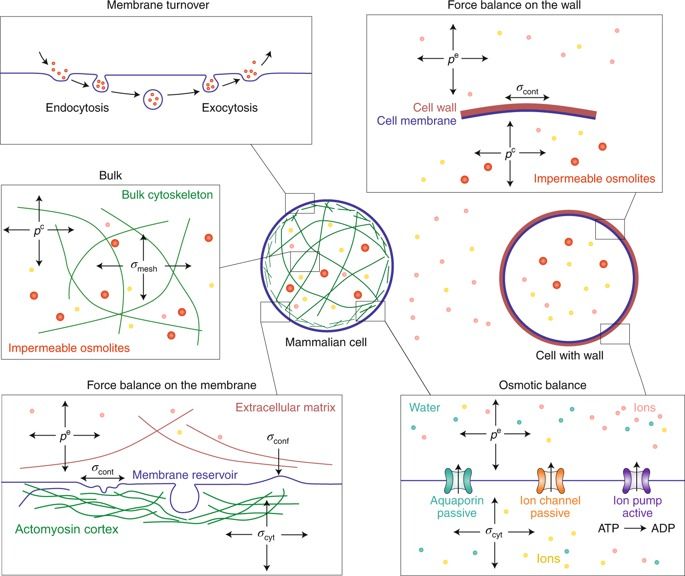The size of a cell is determined by a combination of synthesis, self-assembly, incoming matter and the balance of mechanical forces. Such processes operate at the single-cell level, but they are deeply interconnected with cell-cycle progression, resulting in a stable average cell size at the population level. Here, we examine this phenomenon by reviewing the physics of growth processes that operate at vastly different timescales, but result in the controlled production of daughter cells that are close copies of their mothers. We first review the regulatory mechanisms of size at short timescales, focusing on the contribution of fundamental physical forces. We then discuss the multiple relevant regulation processes operating on the timescale of the cell cycle. Finally, we look at how these processes interact: one of the most important challenges to date involves bridging the gap between timescales, connecting the physics of cell growth and the biology of cell-cycle progression.
